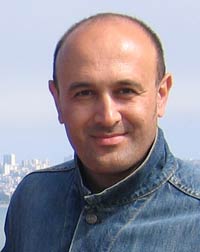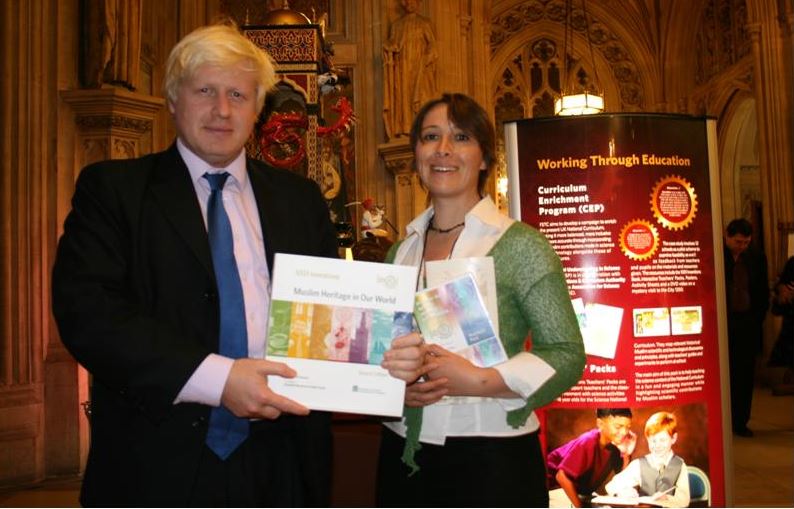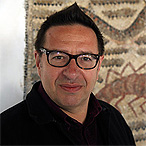

Documenteries on Muslim Civilisation
by Cem NizamogluPublished on: 19th May 2020
We need a visual presentation to understand things better as the saying goes "A picture is worth a thousand words". Some still think Muslim Civilisation did little contribution to science, even there many books and encyclopedias out there to prove this otherwise. Therefore, what better way to prove this with a list of some documentaries.

***
Note of the Editor: This article was first composed by Cem Nizamoglu for 1001 Inventions website and now updated for Muslim Heritage website.
***
There are tons of information out there in writings but still, we need a visual presentation to understand things better as the saying goes “A picture is worth a thousand words”. That’s where documentaries come in handy. Some still think Muslim Civilisation did little contribution to science, even there are many books and encyclopedias out there to prove this otherwise. Therefore, what better way to list some documentaries here to prove this with visual presentation.
There is and was always lots of information about Muslim Civilisation out there, but it wasn’t well presented. The knowledge is in big thick books, in huge encyclopedias with lots of long academic footnotes and references. With the movement started by1001 Inventions in early 2000, there were also documentaries started pop-out at the same time. Some 1001 Inventions worked with or some inspired or some just were not aware of each-other but trying to create that awareness together.
Maybe all these inspired by the same message HRH Prince Charles gave at the Sheldonian Theatre, Oxford, titled “Islam and the West.” when he said:
“If there is much misunderstanding in the West about the nature of Islam, there is also much ignorance about the debt our own culture and civilization owe to the Islamic world. It is a failure, which stems, I think, from the straitjacket of history, which we have inherited. The medieval Islamic world, from central Asia to the shores of the Atlantic, was a world where scholars and men of learning flourished. But because we have tended to see Islam as the enemy of the West, as an alien culture, society, and system of belief, we have tended to ignore or erase its great relevance to our own history.” Prince Charles, 1993
Documentaries are more than watching a TV, it is an experience like following a guide in an ancient city or a diver in an ocean or even an astronaut in space. So here is ten guides show you around what was going on in the Muslim Civilisation:
What The Ancients Did For Us
with Dr. Adam John Hart-Davis
A segment from the documentary – https://vimeo.com/288564995
 Adam Hart-Davis |
“What The Ancients Did For Us – The Islamic World” is part of 2005 BBC documentary series presented by Adam Hart-Davis that examines the impact of ancient civilizations on modern society’. Dr. Adam John Hart-Davis builds and tests some of the most extraordinary discoveries from the early Muslim Civilisation. From soap to torpedoes, and from water pumps to windmills. Presented by Adam Hart-Davis, Hermione Cockburn, and Jamie Darling.
“Series examining the innovations and inventions of ancient civilisations. Adam Hart-Davis builds and tests some of the most extraordinary inventions from the early Islamic World. From soap to torpedoes and from water pumps to windmills Adam shows the lasting effect the Islamic world has left on the technology we use today. Also, reporter Amani Zain tells us the stories behind the golden age of Islamic discovery.” BBC
- The Open University: What The Ancients Did For Us – The Islamic World
- BBC: www.bbc.co.uk/programmes/b0078vf4
- Wikipedia: en.wikipedia.org/wiki/What_the_Ancients_Did_for_Us
- IMDB: www.imdb.com/title/tt0447813
Adam Hart-Davis with the editors of 1001 Inventions: Muslim Heritage in our World” book with Professor Salim T S Al-Hassani, Elizabeth Woodcock at 1001 Inventions Manchester Exhibition back in 2006:

“I am absolutely delighted to be involved in this wonderful exhibition of 1001 inventions.” – “It is a super celebration of Islamic brilliance in the Middle Ages…” Adam Hart-Davis
***
An Islamic History of Europe
with TV Presenter Rageh Omaar
Figure 6. “The designs are miniature palaces that project from the exterior. Although prevalent throughout Turkish cities long ago, there are only a fraction of them left today.” Photos: Caner Cangül (Source)
Omaar Rageh |
The video documentary produced by the BBC in 2005 An Islamic History of Europe, by the famous TV presenter Rageh Omaar (who also covered the American invasion of Iraq), reveals the surprising hidden story of Europe’s Islamic past.
An Islamic History of Europe, produced and broadcasted by BBC 4 in 2005 is a documentary about the Islamic influence on Europe and the effect of the Islamic civilization, learning and sciences on the Western world. In this 90-minute documentary, Rageh Omaar, the presenter of the series, uncovers the hidden story of Europe’s Islamic past and looks back to a Golden Age when European civilisation was enriched by Islamic learning. Rageh travels across medieval Muslim Europe to reveal the vibrant civilisation that Muslims brought to the West.
 This excellent travelogue and historical essay will open a few eyes as well as provide the tourist boards responsible for Cordoba, Toledo, Granada and Palermo with plenty to smile about. Strongly ecommended” Sunday Times
This excellent travelogue and historical essay will open a few eyes as well as provide the tourist boards responsible for Cordoba, Toledo, Granada and Palermo with plenty to smile about. Strongly ecommended” Sunday TimesChronicling the Islamic influence on modern Europe, this evocative film brings to life a time when emirs and caliphs dominated Spain and Sicily and Islamic scholarship swept into the major cities of Europe. The journey thus recreated reveals the debt owed to Islam for its vital contribution to the European Renaissance. The film revisits Spain, Sicily and France in search of the story of Islam in Europe, uncovering an incredible tale of scientific advances and rich cultural influences.
- Muslim Heritage: Bringing to Life the Islamic History of Europe
- IMDB: www.imdb.com/title/tt2229044
- Wikipedia: en.wikipedia.org/wiki/Rageh_Omaar
***
When the Moors Ruled in Europe
with Historian Bettany Hughes
 Bettany Hughes |
As part of the Channel 4, Hidden Civilisation season exploring Islam’s rich and significant contribution to western art and culture, historian Bettany Hughes traces the story of the mysterious and misunderstood Moors, the Islamic society that ruled in Spain for 700 years, but whose legacy was virtually erased from Western history.
Bettany Hughes is presenting 1001 Inventions mini-documenteries:
1001 Inventions at UK Houses of Parliament with Bettany Hughes:
“I have to say that I am absolutely delighted to support the 1001 Inventions Project.” “…with a project like 1001 Inventions, I think we are going to see a phoenix rise from the ashes.” “…1001 Inventions: How Muslim Civilisation Shaped The World. It reminds us just how the Middle East, North Africa and Al Andalus catalysed many of the trappings of modern life. An immensely useful corrective to our Greco-Roman-Renaissance sense of Western Civilisation ” Bettany Hughes
Bettany Hughes: www.bettanyhughes.co.uk
IMDB: www.imdb.com/title/tt2162745
Wikipedia: en.wikipedia.org/wiki/When_the_Moors_Ruled_in_Europe
IMDB: www.imdb.com/title/tt2162745
Wikipedia: en.wikipedia.org/wiki/When_the_Moors_Ruled_in_Europe

(Left to Right) Dr Rim Turkmani, Ms Bettany Hughes, Prof. Jim Al-Khalili, Prof. Lorna Casselton, Prof. Mohamed El-Gomati, Sir Crispin Tickel and Prof. Salim T S Al-Hassani (Source)
***
Science and Islam
with Prof Jim Al-Khalili
 Jim Al-Khalili |
BBC Four – Science & Islam by Prof. Jim Al-Khalili: British scientist, author and broadcaster Prof. Jim Al-Khalili travels through Syria, Iran, Tunisia, Turkey and Spain to tell the story of the great leap in scientific knowledge that took place in the Islamic world between the 8th and 14th centuries.
- Official homepage of Prof. Jim Al-Khalili
- BBC Four: Science & Islam – Language of Science
- BBC Four: Science & Islam – Empire of Reason
- BBC Four: Science & Islam – Power of Doubt
- Pathfinders: The Golden Age of Arabic Science
- 1001 Inventions Interview with Prof. Jim Al-Khalili
- Statement of Professor Jim Al-Khalili in the Opening Session of 1001 Inventions London Exhibition
- It’s Time to Herald the Arabic Science That Prefigured Darwin and Newton
“This is a wonderful [1001 Inventions] book, beautifully illustrated and very well re-searched. I bought a copy and I read it from cover to cover. I also lent it to my father who also thinks it is great! In its own right, it is a wonderful read that also has a rich background for my own projects. I do recommend it and think it is a fascinating book that is extremely well put together and referenced” Prof Jim Al-Khalili

***
After Rome Holy War and Conquest
with Boris Johnson
 Boris Johnson Boris Johnson |
Two-part series, Boris Johnson travels to France, Spain, Egypt, Israel, Syria and Turkey to investigate the early beginnings of what some people now call ‘the clash of civilisations.’ This is the idea that the two historically opposed religious cultures of Christianity and Islam are locked into a never-ending cycle of mutual antipathy, distrust and violence.
Episode 1: This first programme looks at the early history of Islam; the extraordinary series of conquests that gained for it half the territories of the old Roman empire in just 80 years; the rich and sophisticated civilisation Islam produced; the relationships between Muslims, Jews and Christians; and the background to the crusades.
Episode 2: In this programme Boris Johnson also looks at the Sack of Constantinople, when Latin Christians fought eastern Christians, leading eventually to the fall of the city to the Ottoman Turks in 1453. He looks too at the Reconquista in Spain, which culminated in the wholesale expulsion of Jews and Muslims. At every turn of his journey, Boris Johnson finds that the real history is a good deal more subtle and interesting than the fictions that have grown up around it.
- BBC Two: www.bbc.co.uk/programmes/b00fy48j
- Independent: The Weekends Television After Rome
“If we don’t have the wit to escape from history, then let’s at least try and relive the good bits…” Boris Johson

Boris Johson & Elizabeth Woodcock, Co-Editor of 1st and 2nd edition of 1001 Inventions Book
***
The Story of Maths: The Genius of the East
with Prof Marcus du Sautoy
 Marcus du Sautoy |
Four-part series about the history of mathematics, presented by Oxford professor Marcus du Sautoy.
In the Middle East, he looks at the invention of the new language of algebra and the spread of Eastern knowledge to the West through mathematicians such as Leonardo Fibonacci, creator of the Fibonacci Sequence.
They dedicated one part of the episode of “Genius of the East” to the advancement of science in the Muslim civilisation and its impact on Europe and also “House of Wisdom”, algebra, Arabic Numerals, Al-Khawarizmi, Omer Khayyam and many more…
- BBC Four: www.bbc.co.uk/programmes/b00dzy91
- The Open University: The Story of Maths
- Netflix: www.netflix.com/gb/title/80093836
- IMDB: www.imdb.com/title/tt1926910
- Wikipedia: en.wikipedia.org/wiki/The_Story_of_Maths
“Episode Two “The Genius Of The East” gave me a much more solid working knowledge of each. Basically, I am very intrigued by CONCEPTS of mathematics and this program was able to translate my concepts into factual representations from the real world, in order to help me wrap my unconditioned brain around the ideas.” Zomgpwn
***
Art of Spain: The Moorish South
with Art historian Andrew Graham-Dixon
 Andrew Graham-Dixon |
Critic and art historian Andrew Graham-Dixon travels from southern to northern Spain to tell the story of some of Europe’s most exciting and vital art. In an exploration of Moorish Spain, he looks at Muslim political and cultural influence as he travels from Cordoba to Granada, seeing classic buildings such as the Great Mosque in Cordoba, the Alcazar in Seville and the Alhambra in Granada. He also shows how the Moors introduced new foods – including citrus fruits, coffee and spices – to Spain.
- Guardian: The Spanish Renaissance by Robert White
- BBC Four: www.bbc.co.uk/programmes/b008vsgz
- IMDB: www.imdb.com/title/tt3319532
- Wikipedia: en.wikipedia.org/wiki/The_Art_of_Spain
“Spain has produced some of the most startling and original art ever created… the art we need to know about, because it holds the key to understanding all of Europe and its culture…” Andrew Graham-Dixon
***
The Rise and Fall of Islamic Spain
This film takes viewers on an epic journey back into one of the most captivating and important periods of world history, a centuries-long period when Muslims, Christians and Jews inhabited the same far corner of Western Europe and thrived. Here were the very roots of the European Renaissance. But the fragile union dissipated, destroyed by greed, fear and intolerance.
- UPF TV:
www.islamicspain.tv
www.upf.tv/films/cities-of-light
www.islamicity.org - IMDB: www.imdb.com/title/tt1047890
“The history of Islamic Spain, as told in Cities of Light, demonstrates that when religious diversity is accommodated within a social and political system, problems and tensions may still exist, but society is able to manage them, generally to the benefit of all. But when governing powers and religious movements reject complexity and insist on a single cultural and religiously centered point of view, then society is likely to see a widespread loss for everyone.” (source)
***
The Man Who Walked Across the World
with Tim Mackintosh-Smith
 Tim Mackintosh-Smith |
The man who walked across the World: The Adventures of Ibn Battuta. A three-part series of documentary travelogues in which Tim Mackintosh-Smith follows in the footsteps of 14th Century Moroccan scholar Ibn Battuta, who is regarded by many to be one of the greatest travelers and explorers the world has ever seen. In fact, he was able to travel over 75,000 miles, in twenty years and through some 44 nations (as defines by modern day borders) and three continents.
Part 1 – Wanderlust: Beginning in north Africa, Tim visits Battutah’s birthplace of Tangier in Morocco, and stumbles on a performance of medieval trance music. In Egypt, he goes to a remote village where Battutah had an astonishing prophetic dream and visits the world’s oldest university in Cairo.
Part 2 – Magicians and Mystics: In Turkey, Tim watches an illegal whirling dervish ceremony, and in the Taurus mountains he meets the last of the Turkoman nomads. He chats to Tatars in Crimea, while in Delhi he watches a Muslim magician performing the Indian rope trick.
Part 3 – Trade Winds: Tim explores the place of Islam in Hindu-dominated India and communist China, and tells the story of the Islamic trade empire of the 14th century. In Cina, he meets a clan who trace their ancestry back to Arabs, and witnesses an illegal Arabic lesson.
- BBC Four: www.bbc.co.uk/programmes/b007zqcn
- Tim Mackintosh-Smith: www.mackintosh-smith.com
- The Global Dispatches: Travels with Ibn Battutah
Ibn Battutah and I are quite similar, inasmuch as we both set off for the East at the age of 21 and we have both spent a lot of time there. Ibn Battutah was certainly an Arab, but he was very much a “westerner” too, being from Morocco which was the edge of the known world at that time.” Tim Mackintosh-Smith

***
Hidden Civilisation: Paradise Found
with art critic Waldemar Januszczak
 Waldemar Januszczak |
BBC Four: “The Dark Ages have been misunderstood. History has identified the period following the fall of the Roman Empire with a descent into barbarism – a terrible time when civilisation stopped.”
Waldemar Januszczak disagrees. In this four-part series he argues that the Dark Ages were a time of great artistic achievement, with new ideas and religions provoking new artistic adventures. He embarks on a fascinating trip across Europe, Africa and Asia, visits the world’s most famous collections and discovers hidden artistic gems, all to prove that the Dark Ages were actually an ‘Age of Light’.
Along with Christianity, the Dark Ages saw the emergence of another vital religion – Islam. After emerging in the near East it spread across North Africa and into Europe, bringing its unique artistic style with it. Waldemar examines the early artistic explorations of the first people in Muslim Civilisation, the development of their mosques and their scientific achievements” (archived link)
- BBC Four: www.bbc.co.uk/programmes/b01p96fr :
- Wikipedia: en.wikipedia.org/wiki/The_Dark_Ages:_An_Age_of_Light
- IMDB: www.imdb.com/title/tt2576046
- Waldemar Januszczak: www.waldemar.tv
“This is a series about an artistic period that’s looked down on, that never gets the respect it deserves…” Waldemar Januszczak
Also, check Hidden Civilisation: Paradise Found. The art critic and art lover, Waldemar Januszczak, sets out on an epic journey of discovery across the Muslim world from Central Asia, to the heart of the Middle East and beyond to reveal a world of awe-inspiring architecture, spectacular Islamic treasures and a host of artists and craftsmen – to bring the largely unknown and fascinating story of Islamic art and architecture to the attention of the British public. Along the way he meets an array of characters, such as carpet-weavers, calligraphers, potters, jewellers and a supporting cast of local historians and experts. The result is a new and refreshing insight into the world of Islamic art, providing a stimulating introduction to an important culture of great tradition and wondrous beauty:
Conclusion
There are more documentaries out there such as epic Islam: Empire of Faith documentary narrated by Sir Beng Kingsly, whom also played in 1001 Inventions and The Library of Secrets starring as Al-Jazari or very well know British political commentator Andrew Marr’s “History of the World: Into the Light” or documentaries on Zheng He – the Chinese Muslim Admiral. All these documentaries are very interesting from one another. The information is out there either on the paper or your television, it is up to you now discover more…
We will leave with The Medieval Islamicate World: Crash Course History of Science #7:























No hay comentarios:
Publicar un comentario